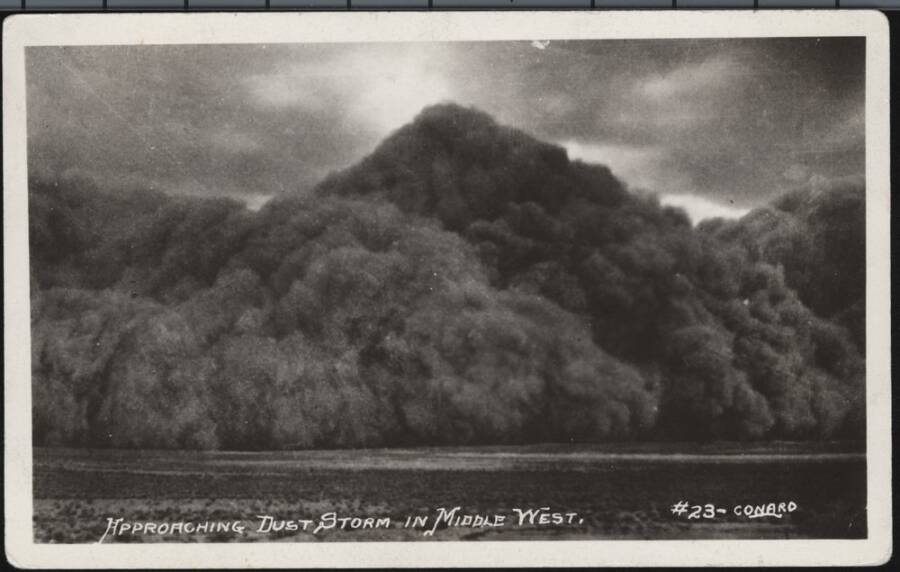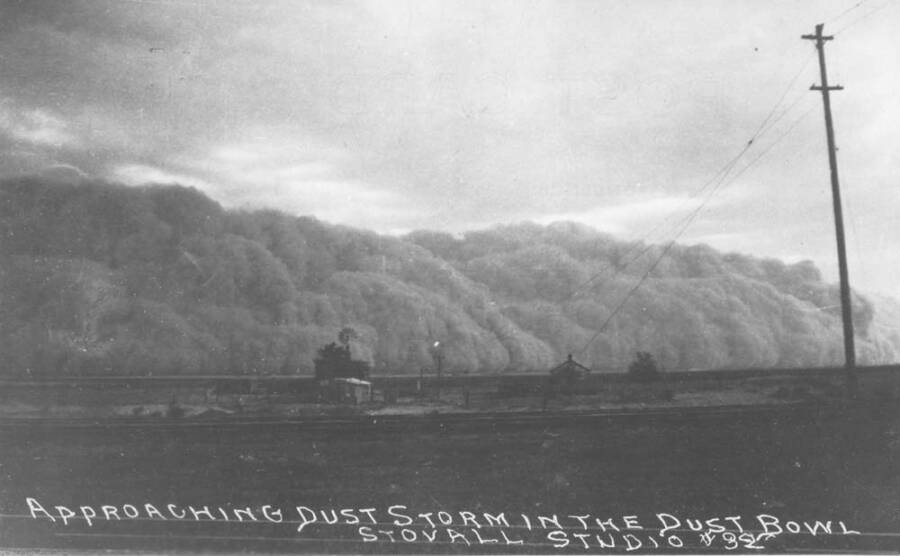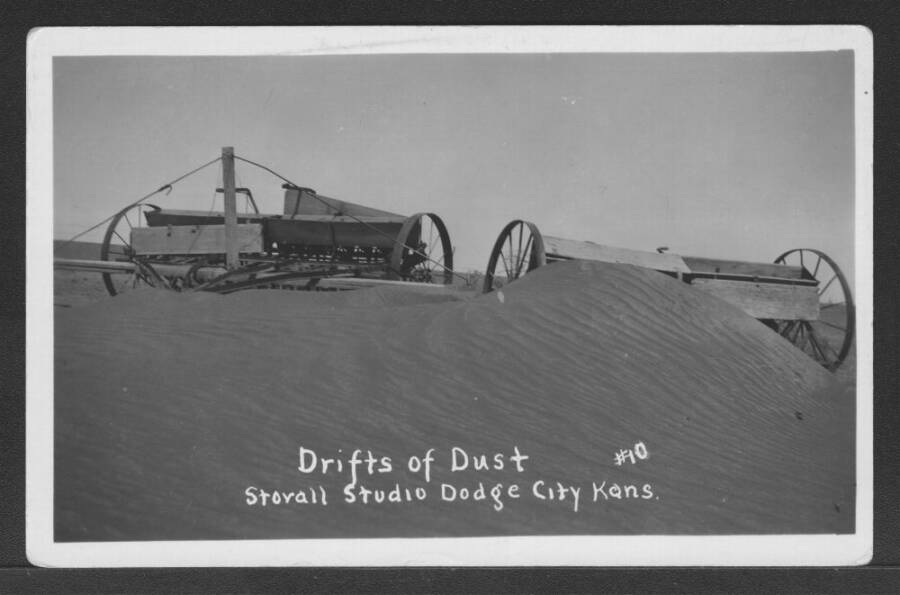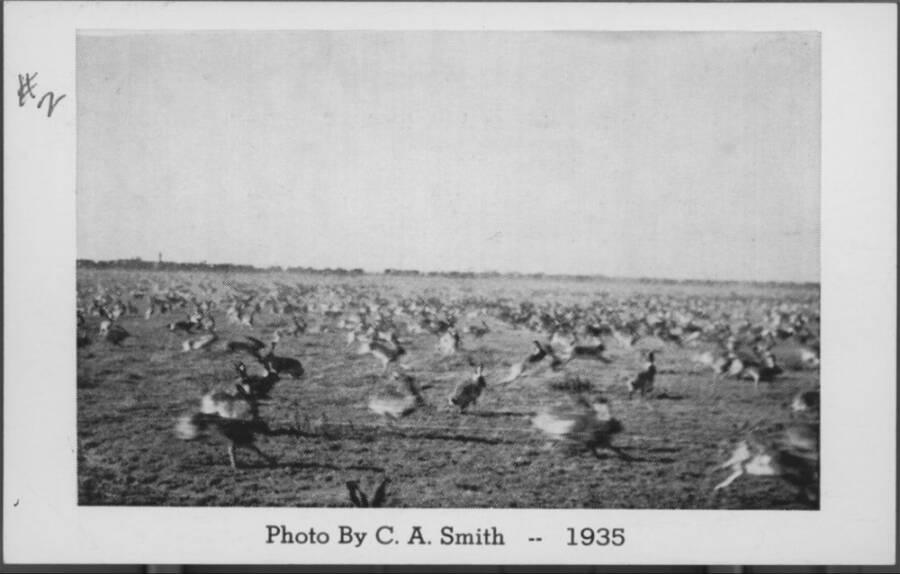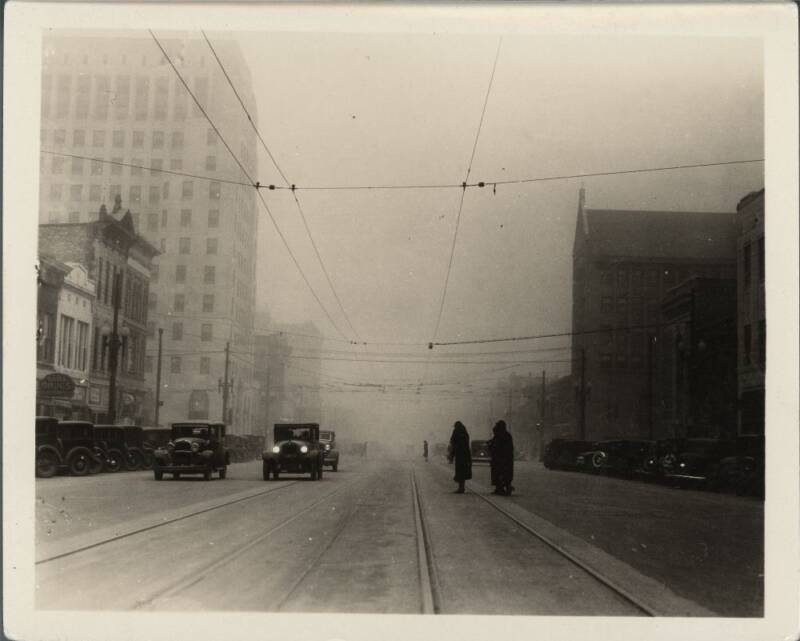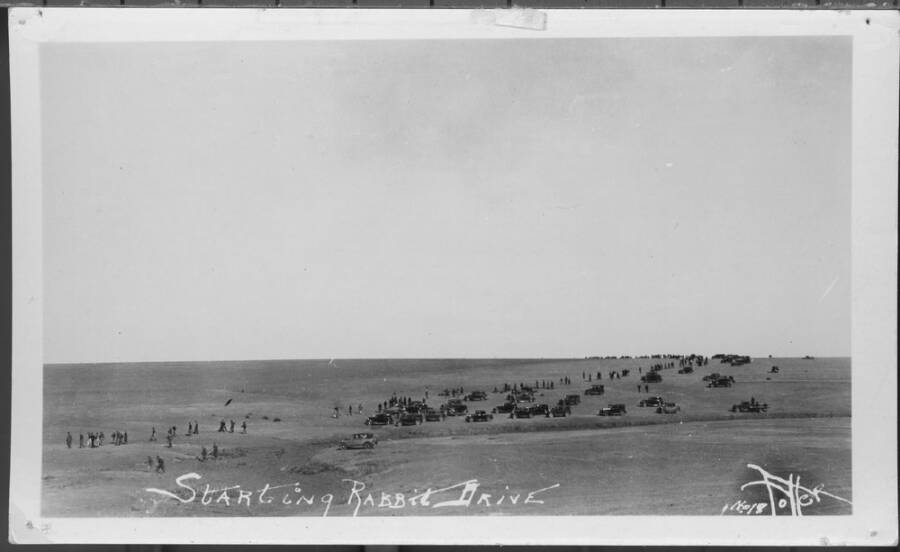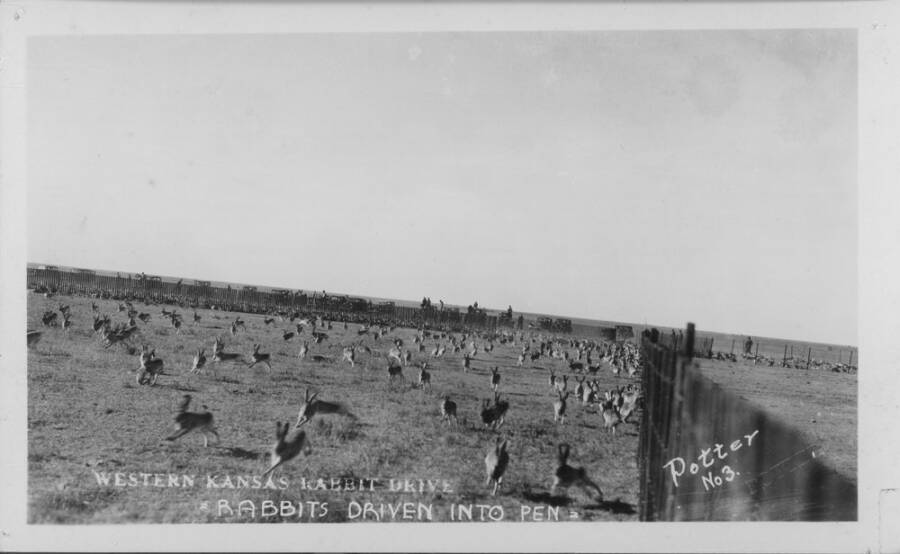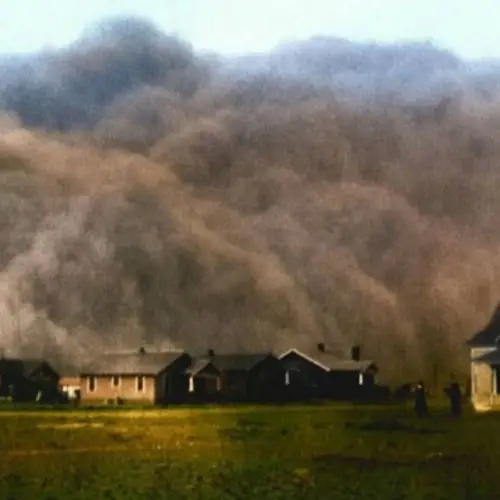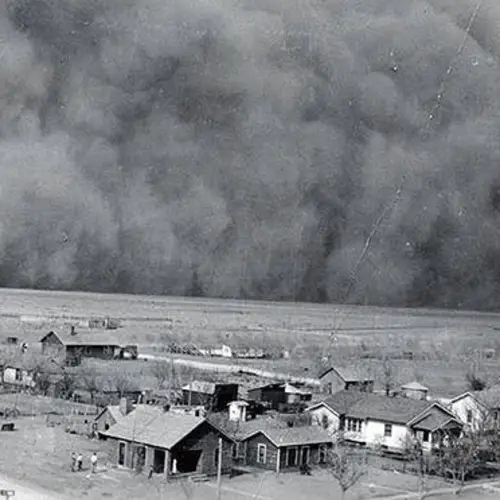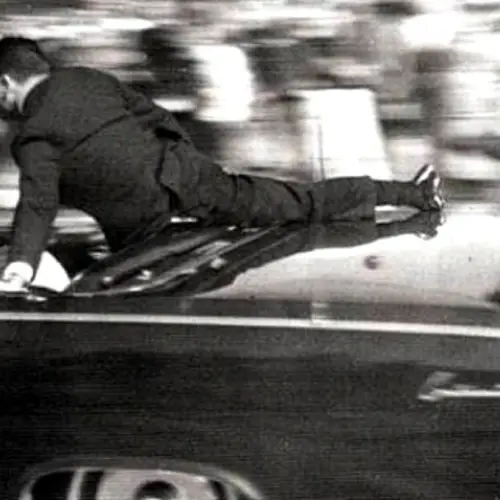From dust pneumonia to "black blizzards," Kansas suffered greatly during the Dust Bowl of the 1930s — and it took years for the state to recover.
The 1930s brought unprecedented devastation to the American Great Plains, with Kansas standing at the center of one of the nation’s most severe environmental disasters in modern history.
The Dust Bowl, a decade-long ecological catastrophe, transformed the once-fertile prairie lands of Kansas into a barren wasteland of swirling dust. This environmental tragedy, the result of a deadly combination of severe drought, poor farming practices, and economic desperation, would forever alter the landscape of Kansas and the lives of its people.
See the effects of the Kansas Dust Bowl through our gallery below.
The Tumultuous Conditions That Created The Kansas Dust Bowl
Kansas had experienced some remarkable agricultural prosperity throughout the early decades of the 20th century.
The state's vast prairies, originally covered by deep-rooted native grasses, had been converted into wheat fields during World War I when high wheat prices encouraged aggressive farming expansion. Farmers employed new plows and tractors to break up millions of acres of grassland, removing the natural vegetation that had held the soil in place for years.
The native prairie grasses of Kansas had evolved over the millennia to withstand the region's naturally variable climate. Their extensive root systems, some of which reached depths of up to 15 feet, created a natural anchor that helped prevent soil erosion even during periods of drought. However, the widespread adoption of intensive farming practices destroyed this natural protection system, leaving the soil vulnerable.
As explained by the National Drought Mitigation Center, little was known of the Great Plains' climate leading up to the Dust Bowl. Though several expeditions in the past century had ventured out over the plains, their purpose was not to study the agricultural potential. "Boosters" of the region, however, decided to sell potential settlers on the idea of establishing farms.
Some farmers also purchased land solely for wheat production without regard for sustainable agricultural methods or soil conservation. Settlers from the east were used to more humid conditions, meaning the farming methods they chose were unsuitable for the plains — but they often had no clue this was the case, especially if they arrived during a wet season.
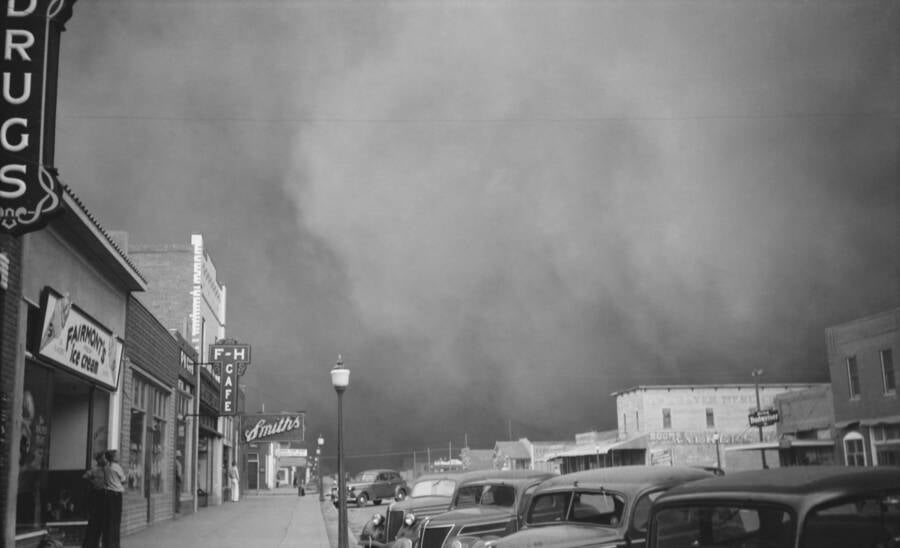
Everett Collection Historical/Alamy Stock PhotoA dust storm in Elkhart, Kansas, in 1937.
The agricultural boom continued through the 1920s, but warning signs were emerging. Dust storms began appearing in the early 1930s, yet many farmers continued their aggressive cultivation practices, encouraged by the relatively good harvests. With this, the stage was set for disaster when severe drought conditions worsened in 1931 and persisted throughout the decade.
The drought that began in 1931 was unlike anything Kansas had experienced before. Entire years would go by with fewer than 10 inches of precipitation, making some areas so dry they felt like a desert. Temperatures also soared, with many days exceeding 100 degrees Fahrenheit during the summer.
The combination of blistering heat and minimal precipitation created conditions that made farming nearly impossible.
Without adequate moisture, the wheat crops that had been planted in the newly broken soil began to fail. The exposed topsoil, now no longer held in place by grass roots or crop cover, became vulnerable to the region's winds.
And as the drought intensified, the soil became increasingly dry and powdery. The rich, dark earth that had once supported abundant harvests was transformed into a fine dust easily carried by high winds. When those winds intensified, it often turned that dry soil into severe dust storms.
Black Blizzards, The Ominous Dust Storms That Ravaged Kansas
By late 1933, the first strong dust storm had already pummeled the Great Plains, but it was a mere preview of what was to come.
According to the Kearny County Museum, as dust storms became increasingly common across the Great Plains, locals made some fascinating observations about the storms' nature. For example, the color of the dust, they said, could tell you a storm's origin: black dust came from Kansas, red dust from Oklahoma, and gray dust from Colorado and New Mexico.
But the true devastation of these storms was made especially apparent on April 14, 1935, a day that's often called Black Sunday.
That day, a massive dust storm originated in the Oklahoma Panhandle and then swept northward to Kansas, eventually carrying an estimated 300,000 tons of displaced topsoil. The storm was so intense that it blocked out the sun, creating an eerie darkness in the afternoon. Visibility dropped to zero, and many people became lost just yards from their homes.
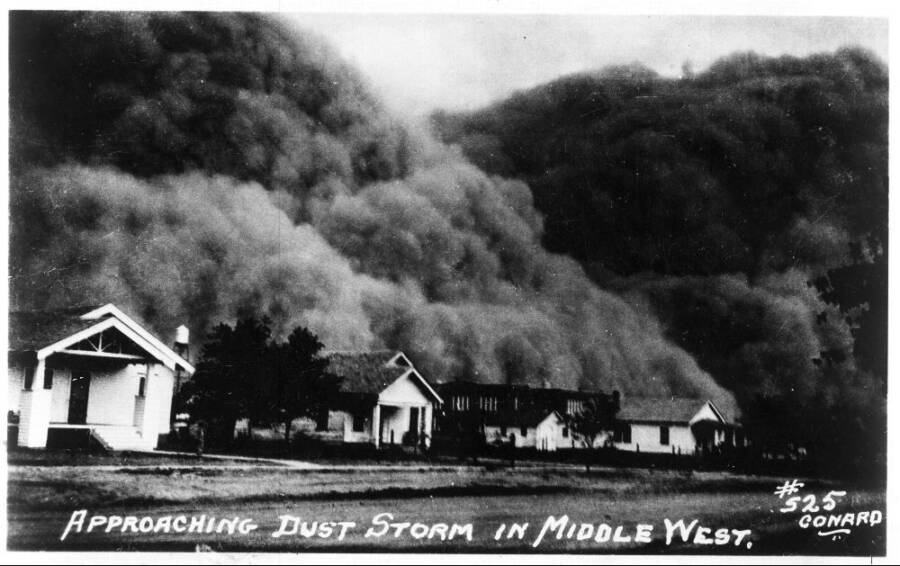
Kansas Historical SocietyOne of the massive dust storms that devastated Kansas throughout the 1930s.
"It just looked like a big solid bank rolling in. When it hit the sun, the sun disappeared, and we beat it into the house," recalled Kansas farmer Howard Zook. "We stood there leaning against the wall. The only way you knew where people were was by feel. We could reach out and hit 'em. You couldn't see 'em a foot away from ya. The dirt was just that thick."
A report from the Lakin Independent shared that one man, Ernest White, "was out on horseback and unable to see the horse he was riding."
In total, the Black Sunday dust storm was estimated to have reached heights of up to 600 feet, covering 800 miles of land, with some winds blowing up to 100 miles per hour. The event was so severe that it prompted Associated Press reporter Robert Geiger to coin the term "Dust Bowl."
These storms were not isolated events, however, but frighteningly regular occurrences in the 1930s. They carried Great Plains soil as far east as Washington, D.C., and even onto some ships on the Atlantic Ocean. Naturally, this also had a profound impact on human lives and the environment.
The Lasting Impact Of The Kansas Dust Bowl
The environmental catastrophe had immediate and devastating effects on Kansas residents, with many farming families losing their crops year after year. With their livelihood literally carried away by the wind, many accumulated crushing debt as they struggled to maintain their farms with quickly decreasing income, especially amidst the ongoing Great Depression.
Dust storms also took a toll on locals' health, the constant exposure to airborne dust particles leading to a condition known as dust pneumonia, or the "brown plague." Babies, children, and elderly people were especially vulnerable to these painful respiratory problems, and hundreds of deaths were directly attributed to dust-related illnesses. To protect themselves, many families hung wet sheets over their windows to try, often in vain, to prevent the dust from entering their homes.
Kansas' agricultural economy was likewise devastated by the Dust Bowl. Wheat production, which had become a key part of the state's rural economy, dramatically decreased in many counties. Farmers who had mortgaged their land during more prosperous times eventually found themselves unable to make payments as their crops failed year after year.
The devastation wasn't limited to crops, though. Farmers' livestock suffered tremendously, as many cattle and horses died due to starvation and respiratory problems. Animals who managed to survive the "black blizzards" were of little value, as they were often left malnourished and sickly.
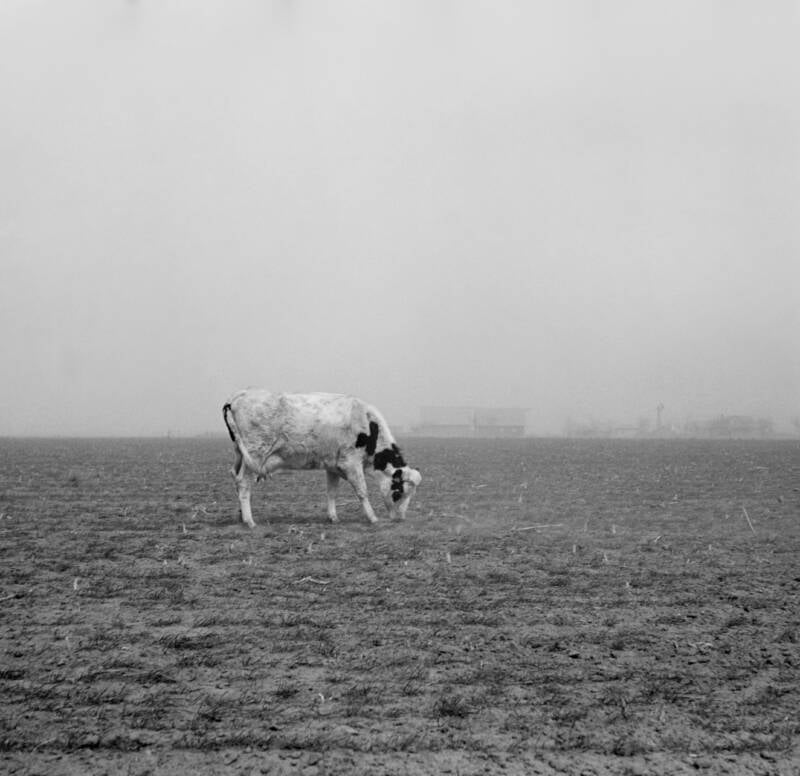
Glasshouse Images/Alamy Stock PhotoA cow attempting to graze on a farm with little vegetation during the Dust Bowl period.
The combination of poor crop yields and valueless livestock created a worsening economic disaster that not only affected farmers, but also other local workers and business owners in the region.
Some small communities in Kansas became virtual ghost towns as businesses closed and residents fled the dire conditions. Schools closed due to a lack of enrollment, churches stood empty, and the social fabric of these rural communities soon began to unravel.
Eventually, the federal government, under President Franklin D. Roosevelt's New Deal programs, responded to the crisis with various relief and conservation efforts. The Soil Conservation Service (now the Natural Resources Conservation Service) was established and began promoting new techniques designed to prevent soil erosion. These techniques included contour farming, crop rotation, and the planting of new tree rows.
The government also reserved millions of acres of damaged land and started the process of rehabilitating the land. The Prairie States Forestry Project planted about 200 million trees across the Great Plains.
In the end, the conservation efforts, combined with the gradual return of normal rainfall patterns in the late 1930s and early 1940s, slowly restored much of the damaged landscape in Kansas and beyond.
Today, Kansas has mostly recovered from the devastation of the 1930s, but lasting traces of the Dust Bowl can still be felt in the Great Plains, influencing agricultural policies as well as classic novels like John Steinbeck's The Grapes of Wrath and the famous film The Wizard of Oz.
Next, check out some photos of Nebraska's earliest settlers. Then, take a look at some colorized photos of the Great Depression.
